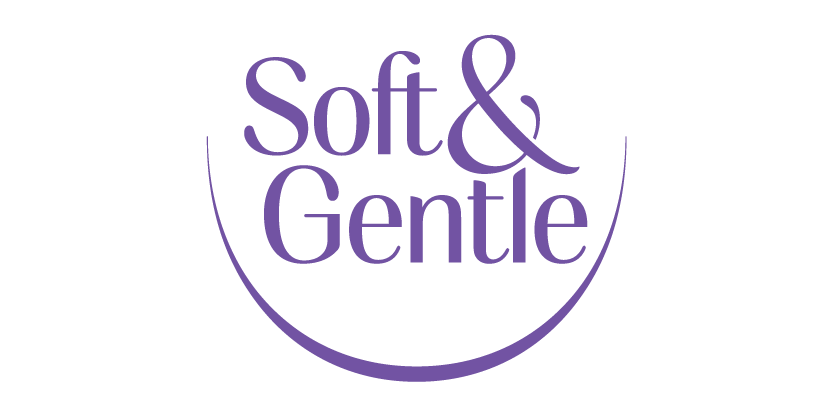Click play for an audio readthrough of this article
This is puberty, hormones and mental health. Injury risks and how to mitigate them.
We know that women in general are more likely to suffer sporting injuries, certainly specific kinds of sporting injuries (at joints, like the knee), than men. But did you know this gender disparity kicks in right around puberty?
Before puberty, injury stats are more-or-less equal for boys and girls.
Why does vulnerability start here? Well, first up, a young woman’s hips widen in puberty, ultimately increasing the so-called Q-angle – the angle between hips and knees – by up to 5%.
From puberty onwards, girls develop into adult women and this process increases the pressure on joints. Women are around twice as likely to suffer an ankle injury than men and, incredibly, up to six times more likely to suffer a non-contact ACL (anterior cruciate ligament) injury than men.
Injury to the ACL – a ligament in the knee – can be painful, debilitating and recovery can take a long time. For women wanting to continue to participate in sport, a partial or complete ACL tear requires surgery and it can take a full year before she’s able to return to court. Soberingly, 45% of women who suffer an ACL injury never compete again and 35% never regain their pre-injury athleticism.
Women’s natural running and jumping and landing techniques play a part too, but we’ll expand on that in our solutions section. Keep reading.
The gender play gap
Researchers believe that most children – girls and boys – are developmentally capable of mastering all fundamental movement skills (think running, jumping, hopping, catching, throwing and kicking) by the age of roughly ten.
Girls and boys learn these skills by seeing good demonstrations, getting good feedback, and through experience – usually a rich variety of enjoyable and challenging games and activities.
So in theory, girls are just as capable as boys of achieving mastery by the same age … but this doesn’t happen. Girls consistently demonstrate poorer movement skills than boys, particular in catching, throwing and kicking. In one study, only 14% of girls had mastered the kick and overarm throw on entering secondary school compared with 50% of boys.
When researchers try to explain the differences between girls and boys they suggest that, from the age of about 5, a gender play gap exists. Boys usually spend more time participating in different ball games and activities where they dash about, fall over and generally lark around. They do this more than girls hence boys’ skills get honed and fine-tuned.
This makes a lot of sense. There’s the cliché of boys playing football with jumpers for goalposts or dodgeball with a tennis ball they found in a hedge but the cliche more or less stands up. Basically, boys play more games that require both locomotor skills (running, dodging, turning) and object-control skills (kicking, throwing, catching) than girls do.
Research shows that in break times at school, girls prefer to engage in verbal games rather than physical ones.
The hormone rollercoaster
Puberty is characterised by several big developments; none more important than the beginning of the incredible menstrual cycle. As explained in this article, the young menstrual cycle can be especially unpredictable.
Before teenage hormones find equilibrium they can be erratic. They’ll peak and plummet with abandon. We know early puberty can be associated with mood swings, emotions, confusion and crisis, but it might also up the risk of injury …
Research has shown a link between oestrogen levels and joint stability. At certain times of the menstrual cycle – just prior to ovulation (the late follicular phase) – a woman’s oestrogen levels rise. High oestrogen levels are associated with looser joints, and therefore less joint stability.
At this point, we should state that non-contact injuries are a result of several risk factors aligning at one time, not one in isolation. There’s not yet enough data to condemn oestrogen (and we’d rather not do that because oestrogen is awesome). But it’s reasonable to assume that the timing of the menstrual cycle might play a part and we explore this further here.
Because teenage cycles are often less regular or unpredictable, it might feel like tracking the cycle to notice patterns is a bit futile. However, establishing great tracking habits early will enable girls to learn the language of periods and cycle symptoms and join the dots between niggles, tightness and injury and what is (or may be) related to the cycle. This’ll serve her so, so well in future.
Budding breasts
Still on hormones, puberty also sees girls’ breasts develop and grow. For some the development phase can be uncomfortable. Downright sore, even. A knock in PE or playing sport can hurt and the pain can linger for longer.
In sport, breast injuries are common – read here for more. From skin irritation to impact injuries, breast injuries happen, hurt and dent performance but there’s a reluctance to report them. They’re perhaps seen as, let’s say, second-tier injuries. Not that important.
Yet the pain can be enough to keep girls out-of-action, and it may be sufficient to break her relationship with sport. It sounds dramatic, but we know nearly two-thirds of girls will abandon sport by the end of puberty and, in many ways, dropout is a bigger threat than injury.
Regarding injury of any kind, but especially one that relates to a sensitive body part, if a younger girl, with wavering confidence, isn’t listened to, taken seriously or supported, demoralisation is an injury that jeopardises her entire future in sport.
The solutions all connect
We’ve stated a handful of injury risks for girls going through puberty and, on-the-surface, it might seem that little can be done. Girls can’t stop their Q-angles widening. We can’t dial back hormones. And breasts will develop as they develop, not much can change that.
But more can be done than first it appears. The best place to start is by spreading awareness of these risks and converting information into actions. Actions such as teaching better basics, focusing on technique, promoting body literacy, and advocating more appropriate sports kit.
We’ll take them one at a time.
Moving, strengthening, conditioning
Even before girls reach puberty it is vital they’re taught to invest in great movement patterns and techniques. And it’s so important that girls are exposed to a wide array of movements.
This might be a netball session but there’s no reason it can’t also include a variety of different movements and skills. It’s this wide variety that allows girls to develop great proprioception, coordination and agility – and these are all things which reduce injury risk.
So why not think about including kicking, tag or dribbling the ball at the start of a session?
Also, well-coached, slow and deliberate conditioning exercises have been shown to be vital in reducing injury risk from puberty onwards. Why? Well, strong joints and muscles are perhaps the most basic protection against injury, yet strength training is part of the fitness jigsaw many women are tempted to bypass, and many coaches don’t expose girls to.
But research shows that integrating specific conditioning exercises and movements into the warm up for ten minutes, three times a week can reduce overall injury rates by 27% and female ACL injury by 45%.
Another issue with the warm up is that many of us have the same routine. In netball, we might be guilty of doing a quick runaround and a few shuttle sprints before it’s onto passing practice.
But a warm-up should be a deliberate, thoughtful and prolonged period of priming. If we’re to make this change, at an individual and a game-level, our sport can use the warm-up for so much more than breaking a sweat. We can use it as an opportunity to implement conditioning exercises that reduce injury risk. A vital step here is ensuring coaches, leaders, teachers, and players themselves are well-briefed on good technique … and what it looks and feels like.
England Netball have an excellent programme of warm up sessions, with coaching cues and progression guidance, called Jump High, Land Strong. We recommend all coaches and teams integrate its ideas into pre-training warm-ups. Do so and we’ll see big and positive steps in injury reduction all across our sport that’ll benefit the game from participation to podium.
At the other end, a proper cool down is just as important. And while doing warm-ups and cool-downs is good advice for anyone, it’s hugely important younger girls have these basics hardcoded early into their exercise life to ensure these habits endure for the future.
Technique
We touched on this earlier but did you know women and men’s natural techniques differ? They do, and these differences are especially apparent in netball.
Basically, the typical man changes direction (whilst running) and lands jumps on his toes. He also bends his knees to absorb impact. The typical woman lands with knees caving in, flat feet and a more upright body.
Her way invites shock, strain and impact into the bones and joints. His way gradually absorbs shock, strain and impact into the muscles.
This is where learning a better way of moving could significantly mitigate risk. The earlier in life a good technique becomes habit, the better her chances of avoiding unnecessary injuries going forward.
So when landing jumps, changing direction, lunging or squatting, a better technique is to ensure your knees don’t buckle inwards. It’s to ensure your knee doesn’t pass over your toe. It’s to bend those knees on impact with your feet facing forwards.
These tweaks to technique engage the hamstrings, glutes, core, and quads, to cushion impact on lower-limb joints and minimise risk.
And this isn’t just for netball. Any exercise that involves pressure on the knees (basically, any weight-bearing activity beyond a gentle walk) should lead with this technique. Check out England Netball’s Jump High Land Strong project for more.
Hormones and body literacy
To ensure girls tune into how their hormones affect them, tracking the cycle should be encouraged from as soon as she has her first period. You can read more about tracking here.
Menstrual cycle tracking doesn’t have to be hard or complicated. No one has to record reams and reams of data. In our experience, people start simply – by tracking when periods start and symptoms across the weeks – and evolve. They evolve to track things like sleep, mood, performance and of course injuries.
Apps can be very useful in tracking, but paper and pen are never a bad fallback.
By tracking, any girl can learn to join the dots on her unique menstrual cycle experience. She can record and track when she feels good and when she feels lethargic. She can record and track when she sleeps well and when she doesn’t. She can record and track peak form as well as illness and pain.
She can record and track when niggles, muscle tightness or injuries crop up and learn to spot patterns.
If she learns that injuries commonly occur in week two, for example, she can take action. She can warm up for longer, double down on recovery, use taping or strapping, or focus on stretching. The point is she can take control, try new strategies, and stick with what works best to help her feel good on court.
Mastering the menstrual cycle is a big step in learning body literacy. It’s knowledge that’ll last her for life.
Kit (inc. wonderful sports bras)
Kit is just so important in sport. It’s important in mindset, performance, and injury prevention.
First mindset. When kit is too loose or too tight, too revealing or too restricting, it can play havoc with a girl’s confidence at a time in her life when she really, really doesn’t need that.
So ensuring girls are comfortable in their kit is not just a guard against injury (which we’ll get to) but a layer of protection from them feeling disillusioned. Or on display. It promotes the wonderful freedom of exercise and guards against girls wanting to dial sport back, or drop out entirely.
Obviously, kit is functional too. We mentioned the potential for pain and injury in developing breasts and that there’s no way to halt the body’s development. True. But all of us, the younger the better, can (and should) protect our breasts …
For the full digest on why sports bras might be the greatest invention since the toaster, click here. But in a nutshell, a well-fitting sports bra is protection against injury in more ways you can fathom. The breasts, even small or developing ones, have a force all of their own which can invite injury in various body zones. Oh and a sports bra is also, in fact, a major performance-enhancer.
The take-away
It pays to know where younger and developing bodies are at risk of injury. Some of these risks begin in puberty and last through life, but the best remedy, or protection, against injury risks is education, awareness and learning a better kind of practice as early as possible.
For that to happen, we all need to share and spread the word. The female body is a wonderful, magical thing and the earlier in life we learn it – so we can protect it – the better for her and her future … really, for sport and for everyone’s future.
As a reminder, the content of the course belongs to The Well HQ. You have permission to access and use the content yourself or, if you are an organisation, for the number of users selected, but are not otherwise permitted to share such content with others, all in accordance with our Course Terms and Conditions.

























